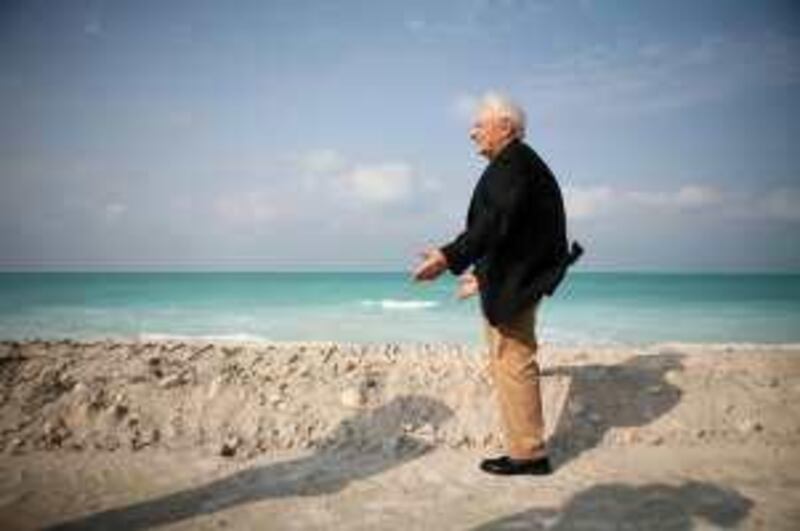ABU DHABI // Every now and again a city does something so extraordinary that it is impossible to ignore. The project that inspired the term "Bilbao Effect", in which the small Spanish town's Guggenheim Museum symbolised its arrival on the global cultural stage, was one such example. Abu Dhabi hopes that its undertaking on Saadiyat Island will be the next. At just over 25 square km, the Dh100 billion (US$22.7bn) project will be divided into six districts, the most significant of which will be the cultural district, housing four major museums, a performing arts theatre as well as residential and green space.
When the Abu Dhabi Tourism Authority received a mandate in 2004 to begin developing Saadiyat, they seized on museums as a cultural attraction that could build tourism potential for Abu Dhabi. They sought modern and classic art, performing arts, and soon the idea grew to include a national and maritime museum. During a trip to New York, officials of what became the Tourism Development and Investment Company visited the Guggenheim Museum and liked what they saw and heard.
"I had been involved in culture for a long time, involved in the quiet power of culture," said Thomas Krens, former director of The Solomon R. Guggenheim Foundation, who, as Senior Advisor for International Affairs for the foundation, now overseas development of the Guggenheim Abu Dhabi museum. To market Saadiyat Island globally, the TDIC decided they needed a signature project: a Guggenheim. And, having worked with the Canadian architect Frank Gehry on the Guggenheim in Bilbao, Mr Krens suggested the world renowned architect for the job.
"I understood Tom's vision. I could work with it and be inspired by it," Mr Gehry said. Creating a design that would be sensitive to a culture he knew little about was a challenge. "Here, there's a different culture, different landscape, different credo and sense of history. But there are historic tendencies with architecture over the past here that resonate, and I hope to connect with that." In Bilbao, the idea was that the Guggenheim that Gehry designed would be the landmark to put the city on the map. And it worked. Tourists flocked to the town to watch the museum go up.
Mr Gehry is reluctant to talk about the Bilbao Effect, but the experience in Spain led people to wonder what a single building could contribute to a city. "Historically, you can do things to make a place a destination. Through the ages, people have travelled to see buildings," he said. "In Abu Dhabi, there is an opportunity to create an urban fabric, but one building won't do it. With the cultural district, the rulers are like parents, interested in creating an environment for the future of their country to participate in world culture."
Abu Dhabi and the UAE may not yet have the most vibrant art scene in the world, but encouraging that is what the new cultural district is all about, Mr Gehry said. It will not only connect the local people to the world and the world to Abu Dhabi, but the project has the potential to awaken a local creative community. The Guggenheim Abu Dhabi will be 98 metres high and set over the water, just off the white-sand beaches of Saadiyat Island. The site is being levelled, and the TDIC says that construction should begin by the end of the year.
Lee Tabler, the TDIC's chief executive, said the project is worth the huge investment. "We're creating the museum of the future. And it's not just about a contemporary art museum, but also about contemporary architecture." So are the expectations that the Guggenheim Abu Dhabi will put the city on the world map realistic? No one actually knows, but Mr Gehry believes they certainly could be. "It's going to be a growing-up process for Abu Dhabi; it will inevitably have to be more open if it wants to be part of the world. This is an Islamic country; the culture and the sensitivities to certain types of art could be complicated. But cultural artefacts are global assets that affect global understanding of disparate cultures. And this could make the world a better place."
jhume@thenational.ae






